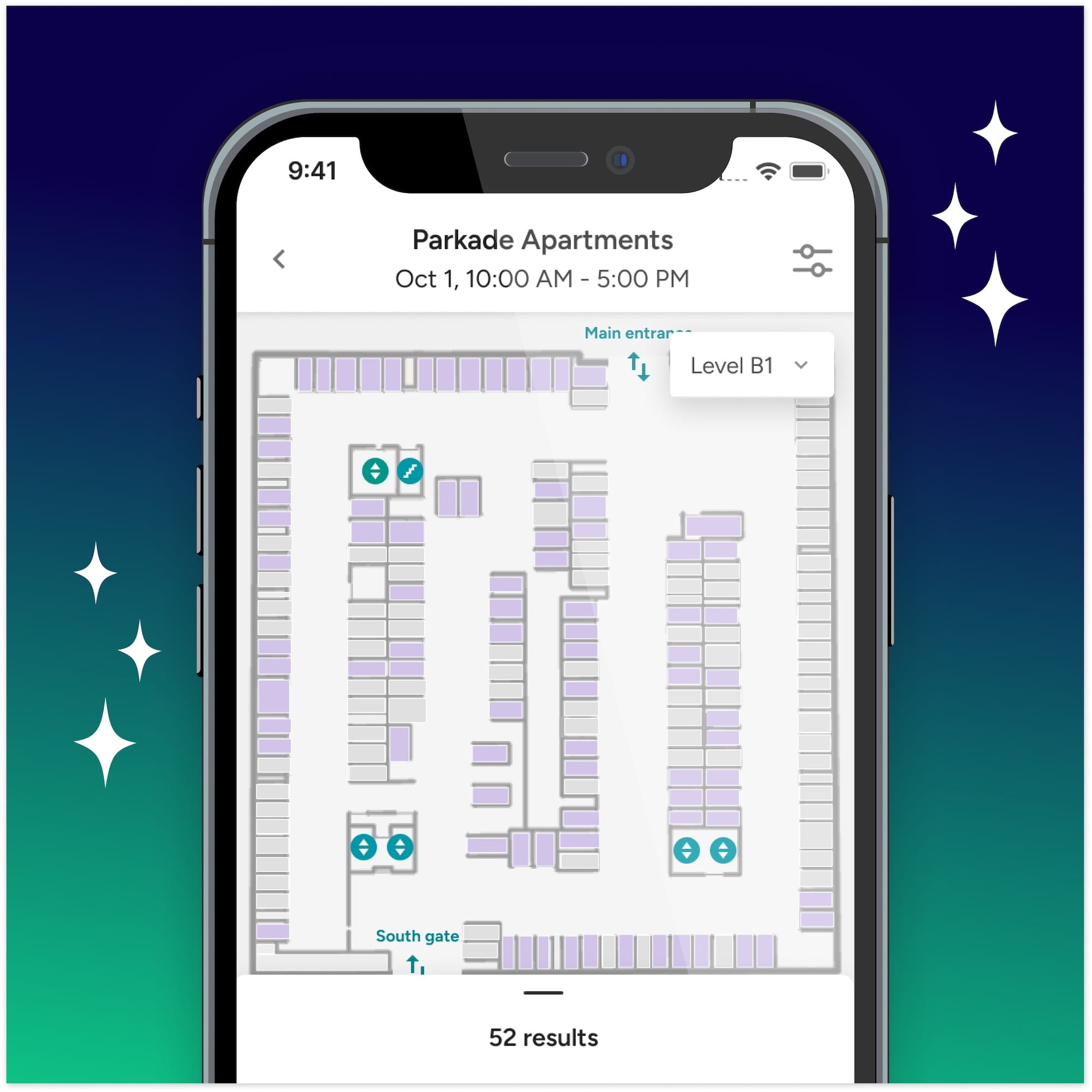

TABLE OF CONTENTS
It’s time for the parking practices of the past to be swept out in favor of a new way to handle parking at offices.
In many commercial buildings with multiple tenants and on-site parking, landlords typically assign on-site parking proportional to the square footage rented. For example, in a 100,000 square foot building with two floors — one tenant on each — and 100 parking spots, each tenant would typically be given 50 parking spots.
Problem is, their parking needs are rarely proportional to the square footage rented.
One floor might contain an accounting firm, where everyone comes to the office five days and week but only from 9-5, creating demand for 75 parking spots. Another floor might be a sales office of a technology company, with many team members who travel to sales meetings or frequently work remotely. The salespeople are also younger, and tend to own fewer cars — meaning they only need 25 parking spots.
At the typical commercial office building, half of the sales office’s parking would sit empty every day while the accounting firm’s employees would be increasingly frustrated about the lack of parking, as their spots would fill up every day.
Even more likely, the accounting employees, seeing dozens of empty spots nearby sit empty regularly, would probably start parking in unauthorized spots, creating bad blood and resulting in frequent tickets or tows.
Instead, the building should just do one of two things:
This can be done easily through Parkade. Here’s how.
Reach out to Parkade on our Get Started page, and our team can walk you through the process. It’s a snap!

We’re thrilled to announce one of our most significant leaps forward this year: the launch of dynamic maps across our mobile and web applications.
Read Story
Now that AB 1317 is official, it’s time to brush up on the requirements and see how your properties stand to benefit.
Read Story
For multi-family communities still offering first-come, first-served parking for residents, Southwest's decision may shed some light on why it's time for a switch.
Read Story